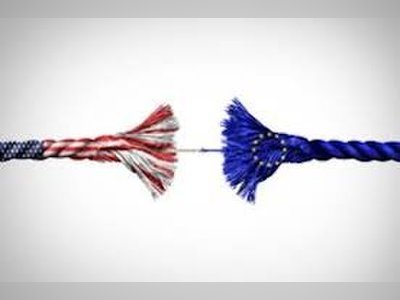Digital Dilemma: TikTok's Turbulence in America
Balancing national security with free speech as the U.S. grapples with TikTok's future.
The ever-evolving digital landscape is facing a substantial upheaval as TikTok, the beloved social media behemoth, stands at the brink of a potential ban in the United States.
A federal court has affirmed a law mandating TikTok to sever its ties with ByteDance, its Chinese parent company, by mid-January.
This decision has sparked fervent debates centered around national security and free speech, marking a critical juncture for digital freedom.
Critics contend that banning TikTok could set a precarious precedent, infringing upon the First Amendment rights of one hundred seventy million American users.
TikTok maintains that this decision lacks a solid foundation and veers dangerously close to outright censorship.
Meanwhile, the government's concerns cannot be dismissed outright.
They underscore the potential threats posed by Chinese influence, notably concerning data privacy and the manipulation of content.
The apprehension is that user data and algorithms could be exploited by Beijing for purposes of espionage or propaganda.
However, the evidence supporting such claims remains largely speculative, cloaked in redactions that leave the public in the dark.
This reticence raises an important question about transparency: is it not vital to build public trust in such critical issues?
Transparency is indeed paramount, yet the obligation to safeguard national interests occasionally necessitates withholding information that could compromise intelligence efforts.
The link between TikTok and ByteDance undeniably raises valid alarms over potential data vulnerabilities.
Yet, is an outright ban the sole solution to address these vulnerabilities?
An alternative approach might involve implementing stricter regulations and continuous audits, possibly striking a balance to ensure security while preserving innovation.
A complete ban risks stifling the innovation that platforms like TikTok foster, potentially inhibiting creative expression and technological advancements.
Indeed, this issue is emblematic of a double-edged sword, where security concerns and innovation coexist in a delicate equilibrium.
As this saga continues to unfold, it urges a re-examination of the ties binding technology, politics, and privacy.
How do we safeguard our digital domain without sacrificing the fundamental freedoms upon which it thrives?
This question is poised to resonate long after the legal dust settles.
As we navigate these intricate waters, aligning security with innovation must become our guiding principle.
Ultimately, this debate invokes Benjamin Franklin's timeless warning: 'Those who would give up essential Liberty, to purchase a little temporary Safety, deserve neither Liberty nor Safety.' It reminds us of the enduring challenge to balance liberty with safety judiciously.
A federal court has affirmed a law mandating TikTok to sever its ties with ByteDance, its Chinese parent company, by mid-January.
This decision has sparked fervent debates centered around national security and free speech, marking a critical juncture for digital freedom.
Critics contend that banning TikTok could set a precarious precedent, infringing upon the First Amendment rights of one hundred seventy million American users.
TikTok maintains that this decision lacks a solid foundation and veers dangerously close to outright censorship.
Meanwhile, the government's concerns cannot be dismissed outright.
They underscore the potential threats posed by Chinese influence, notably concerning data privacy and the manipulation of content.
The apprehension is that user data and algorithms could be exploited by Beijing for purposes of espionage or propaganda.
However, the evidence supporting such claims remains largely speculative, cloaked in redactions that leave the public in the dark.
This reticence raises an important question about transparency: is it not vital to build public trust in such critical issues?
Transparency is indeed paramount, yet the obligation to safeguard national interests occasionally necessitates withholding information that could compromise intelligence efforts.
The link between TikTok and ByteDance undeniably raises valid alarms over potential data vulnerabilities.
Yet, is an outright ban the sole solution to address these vulnerabilities?
An alternative approach might involve implementing stricter regulations and continuous audits, possibly striking a balance to ensure security while preserving innovation.
A complete ban risks stifling the innovation that platforms like TikTok foster, potentially inhibiting creative expression and technological advancements.
Indeed, this issue is emblematic of a double-edged sword, where security concerns and innovation coexist in a delicate equilibrium.
As this saga continues to unfold, it urges a re-examination of the ties binding technology, politics, and privacy.
How do we safeguard our digital domain without sacrificing the fundamental freedoms upon which it thrives?
This question is poised to resonate long after the legal dust settles.
As we navigate these intricate waters, aligning security with innovation must become our guiding principle.
Ultimately, this debate invokes Benjamin Franklin's timeless warning: 'Those who would give up essential Liberty, to purchase a little temporary Safety, deserve neither Liberty nor Safety.' It reminds us of the enduring challenge to balance liberty with safety judiciously.












